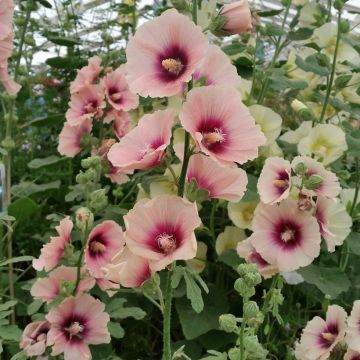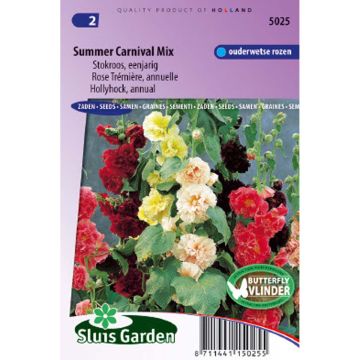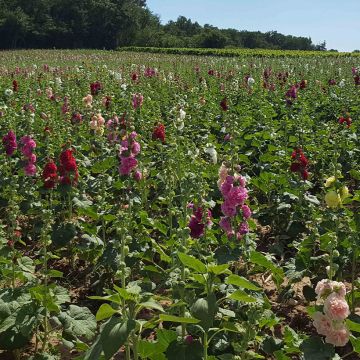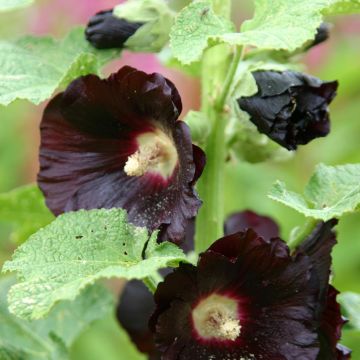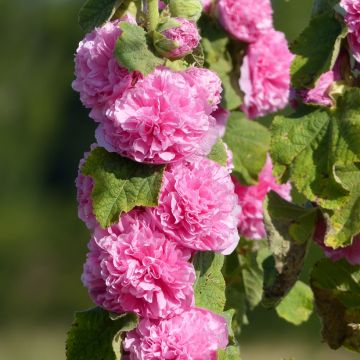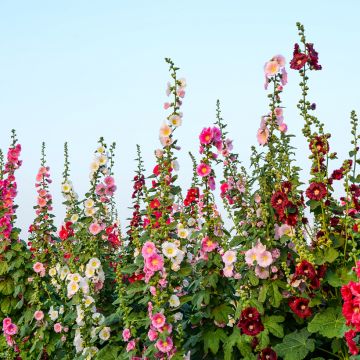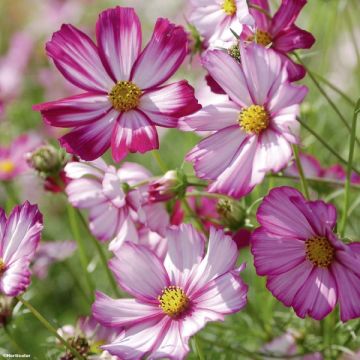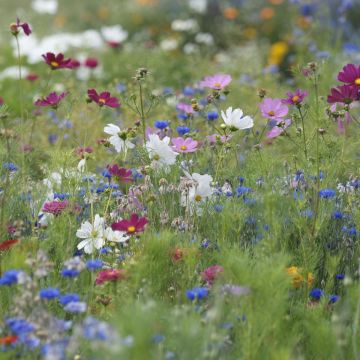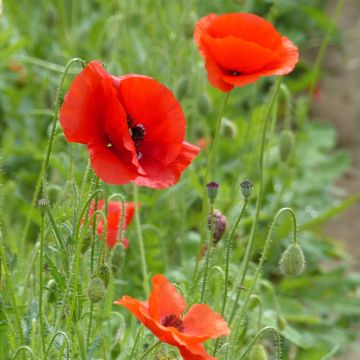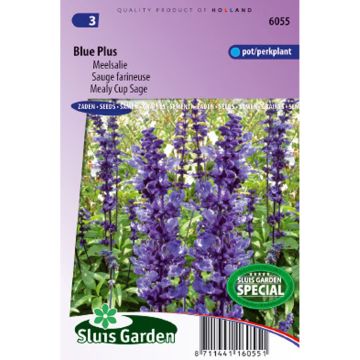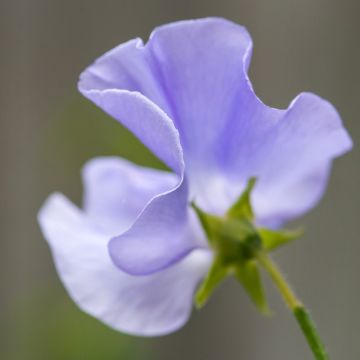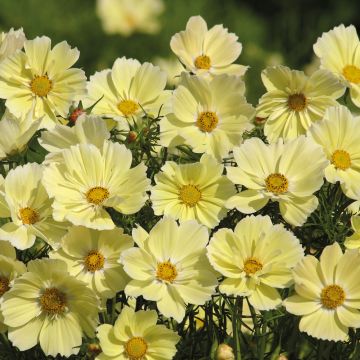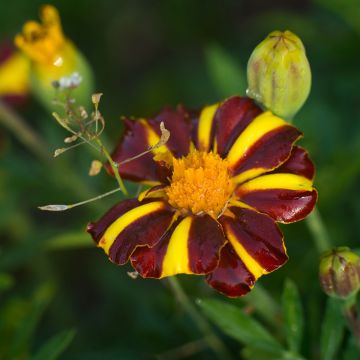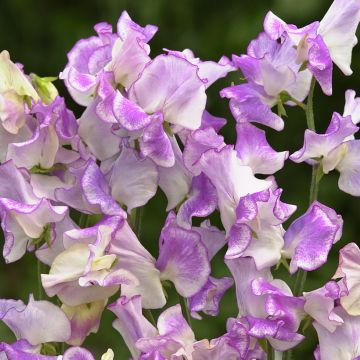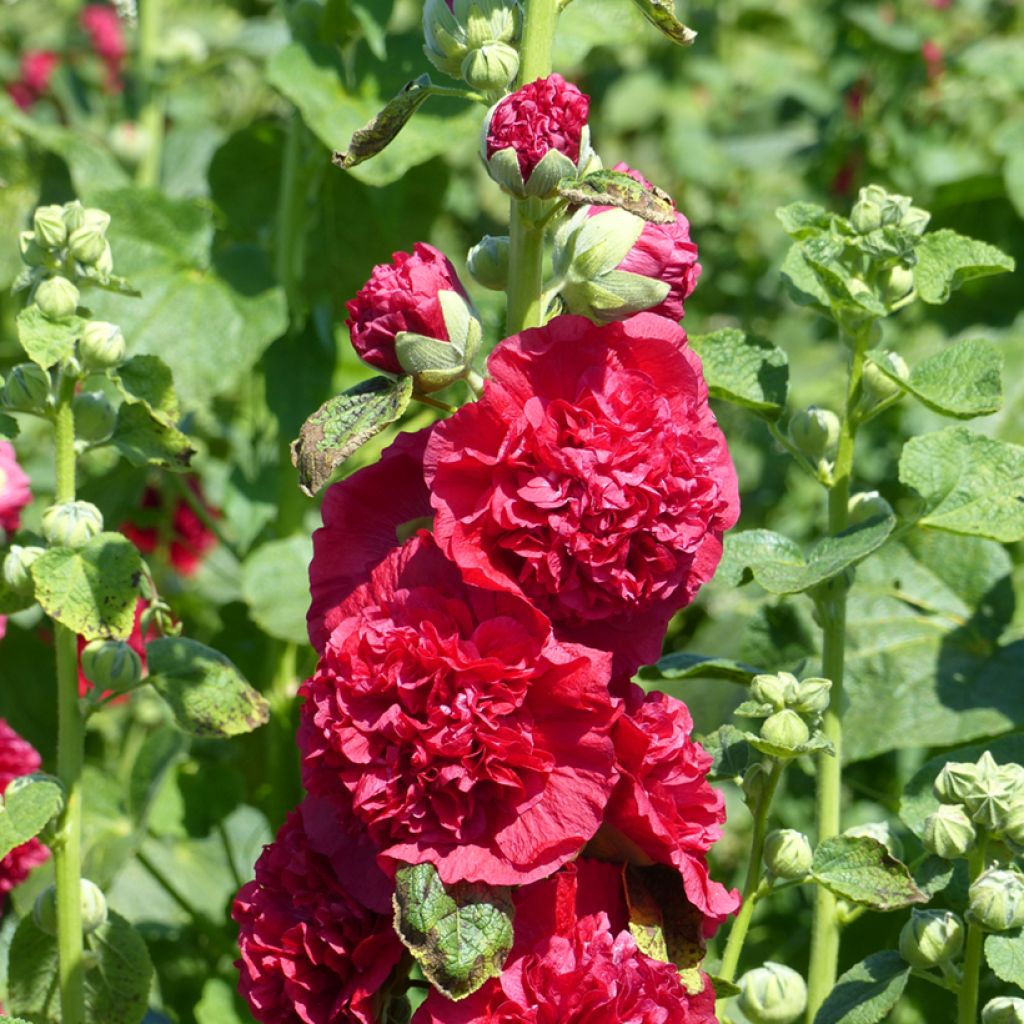

Alcea rosea Chater's Double Scarlet seeds - Hollyhock
Alcea rosea Chater's Double Scarlet seeds - Hollyhock
Alcea rosea Chater's Double Scarlet
Hollyhock
This item cannot be shipped to the selected country
Dispatch by letter from €3.90
More information
Schedule delivery date,
and select date in basket
This plant carries a 6 months recovery warranty
More information
We guarantee the quality of our plants for a full growing cycle, and will replace at our expense any plant that fails to recover under normal climatic and planting conditions.
Seed-only orders are dispatched by sealed envelope. The delivery charge for seed-only orders is €3.90.
Does this plant fit my garden?
Set up your Plantfit profile →
Description
The 'Chater's Double Scarlet' hollyhock (Alcea rosea) is an eye-catching variety due to its large, very double scarlet red flowers. An upright and robust plant, reaching up to 2.5 metres in height, it creates a spectacular effect in borders or against a wall. Ideal for cottage gardens, this biennial self-seeds naturally in the garden. It blooms generously for a good part of the summer.
Belonging to the Malvaceae family, the botanical species Alcea rosea is native to Asia Minor and has naturalised in many European gardens. 'Chater's Double Scarlet', a cultivar created in the 19th century by Thomas Chater, is famous for its imposing floral spikes that can reach 2 to 2.5 metres in height. The plant grows quickly and first forms a rosette of large, rounded, lobed, fairly light green leaves. From this base a sturdy floral stem rises in the second year, bearing multiple flowers that bloom from June to August. The flower buds open successively to reveal eye-catching, very double, superb scarlet flowers of around 10 cm in diameter. Like all hollyhocks, it attracts pollinators and easily self-seeds after flowering. The plant produces dry fruits containing numerous seeds.
The 'Chater's Double Scarlet' hollyhock integrates perfectly in the background of a border or along a wall against which its floral spikes can be protected from the wind. To create a spectacular display, it can be paired with perennials such as yellow or orange-flowered yarrows, which balance its fiery colour. It also pairs well with Rudbeckia fulgida 'Goldsturm' for a contrast of vibrant colours, or Verbascum phlomoides 'Spica' for a complementary flowering in more subtle tones. Lastly, tall bellflowers like Campanula lactiflora with light purple flowers will form a beautiful combination of form and colour with this hollyhock.
Report an error about the product description
Flowering
Foliage
Plant habit
Botanical data
Alcea
rosea
Chater's Double Scarlet
Malvaceae
Hollyhock
Cultivar or hybrid
Other Hollyhock seeds
Planting and care
Sow 'Chater's Double Scarlet' Hollyhocks from May to July. It takes 15 to 20 days for the young shoots to appear. Transplant the young plants, when they reach a height of 7 cm, at a distance of 20 cm from each other. The following spring, place them in your flower beds at a distance of 40 to 50 cm. Be prepared to stake them if the location is not sheltered from the wind. Avoid planting Hollyhocks in the same spot for several years in a row to prevent the appearance of rust (a parasitic fungus visible as orange powder) on the foliage.
Sowing period
Intended location
This item has not been reviewed yet - be the first to leave a review about it.
Flower seeds
Haven't found what you were looking for?
Hardiness is the lowest winter temperature a plant can endure without suffering serious damage or even dying. However, hardiness is affected by location (a sheltered area, such as a patio), protection (winter cover) and soil type (hardiness is improved by well-drained soil).

Photo Sharing Terms & Conditions
In order to encourage gardeners to interact and share their experiences, Promesse de fleurs offers various media enabling content to be uploaded onto its Site - in particular via the ‘Photo sharing’ module.
The User agrees to refrain from:
- Posting any content that is illegal, prejudicial, insulting, racist, inciteful to hatred, revisionist, contrary to public decency, that infringes on privacy or on the privacy rights of third parties, in particular the publicity rights of persons and goods, intellectual property rights, or the right to privacy.
- Submitting content on behalf of a third party;
- Impersonate the identity of a third party and/or publish any personal information about a third party;
In general, the User undertakes to refrain from any unethical behaviour.
All Content (in particular text, comments, files, images, photos, videos, creative works, etc.), which may be subject to property or intellectual property rights, image or other private rights, shall remain the property of the User, subject to the limited rights granted by the terms of the licence granted by Promesse de fleurs as stated below. Users are at liberty to publish or not to publish such Content on the Site, notably via the ‘Photo Sharing’ facility, and accept that this Content shall be made public and freely accessible, notably on the Internet.
Users further acknowledge, undertake to have ,and guarantee that they hold all necessary rights and permissions to publish such material on the Site, in particular with regard to the legislation in force pertaining to any privacy, property, intellectual property, image, or contractual rights, or rights of any other nature. By publishing such Content on the Site, Users acknowledge accepting full liability as publishers of the Content within the meaning of the law, and grant Promesse de fleurs, free of charge, an inclusive, worldwide licence for the said Content for the entire duration of its publication, including all reproduction, representation, up/downloading, displaying, performing, transmission, and storage rights.
Users also grant permission for their name to be linked to the Content and accept that this link may not always be made available.
By engaging in posting material, Users consent to their Content becoming automatically accessible on the Internet, in particular on other sites and/or blogs and/or web pages of the Promesse de fleurs site, including in particular social pages and the Promesse de fleurs catalogue.
Users may secure the removal of entrusted content free of charge by issuing a simple request via our contact form.
The flowering period indicated on our website applies to countries and regions located in USDA zone 8 (France, the United Kingdom, Ireland, the Netherlands, etc.)
It will vary according to where you live:
- In zones 9 to 10 (Italy, Spain, Greece, etc.), flowering will occur about 2 to 4 weeks earlier.
- In zones 6 to 7 (Germany, Poland, Slovenia, and lower mountainous regions), flowering will be delayed by 2 to 3 weeks.
- In zone 5 (Central Europe, Scandinavia), blooming will be delayed by 3 to 5 weeks.
In temperate climates, pruning of spring-flowering shrubs (forsythia, spireas, etc.) should be done just after flowering.
Pruning of summer-flowering shrubs (Indian Lilac, Perovskia, etc.) can be done in winter or spring.
In cold regions as well as with frost-sensitive plants, avoid pruning too early when severe frosts may still occur.
The planting period indicated on our website applies to countries and regions located in USDA zone 8 (France, United Kingdom, Ireland, Netherlands).
It will vary according to where you live:
- In Mediterranean zones (Marseille, Madrid, Milan, etc.), autumn and winter are the best planting periods.
- In continental zones (Strasbourg, Munich, Vienna, etc.), delay planting by 2 to 3 weeks in spring and bring it forward by 2 to 4 weeks in autumn.
- In mountainous regions (the Alps, Pyrenees, Carpathians, etc.), it is best to plant in late spring (May-June) or late summer (August-September).
The harvesting period indicated on our website applies to countries and regions in USDA zone 8 (France, England, Ireland, the Netherlands).
In colder areas (Scandinavia, Poland, Austria...) fruit and vegetable harvests are likely to be delayed by 3-4 weeks.
In warmer areas (Italy, Spain, Greece, etc.), harvesting will probably take place earlier, depending on weather conditions.
The sowing periods indicated on our website apply to countries and regions within USDA Zone 8 (France, UK, Ireland, Netherlands).
In colder areas (Scandinavia, Poland, Austria...), delay any outdoor sowing by 3-4 weeks, or sow under glass.
In warmer climes (Italy, Spain, Greece, etc.), bring outdoor sowing forward by a few weeks.


































